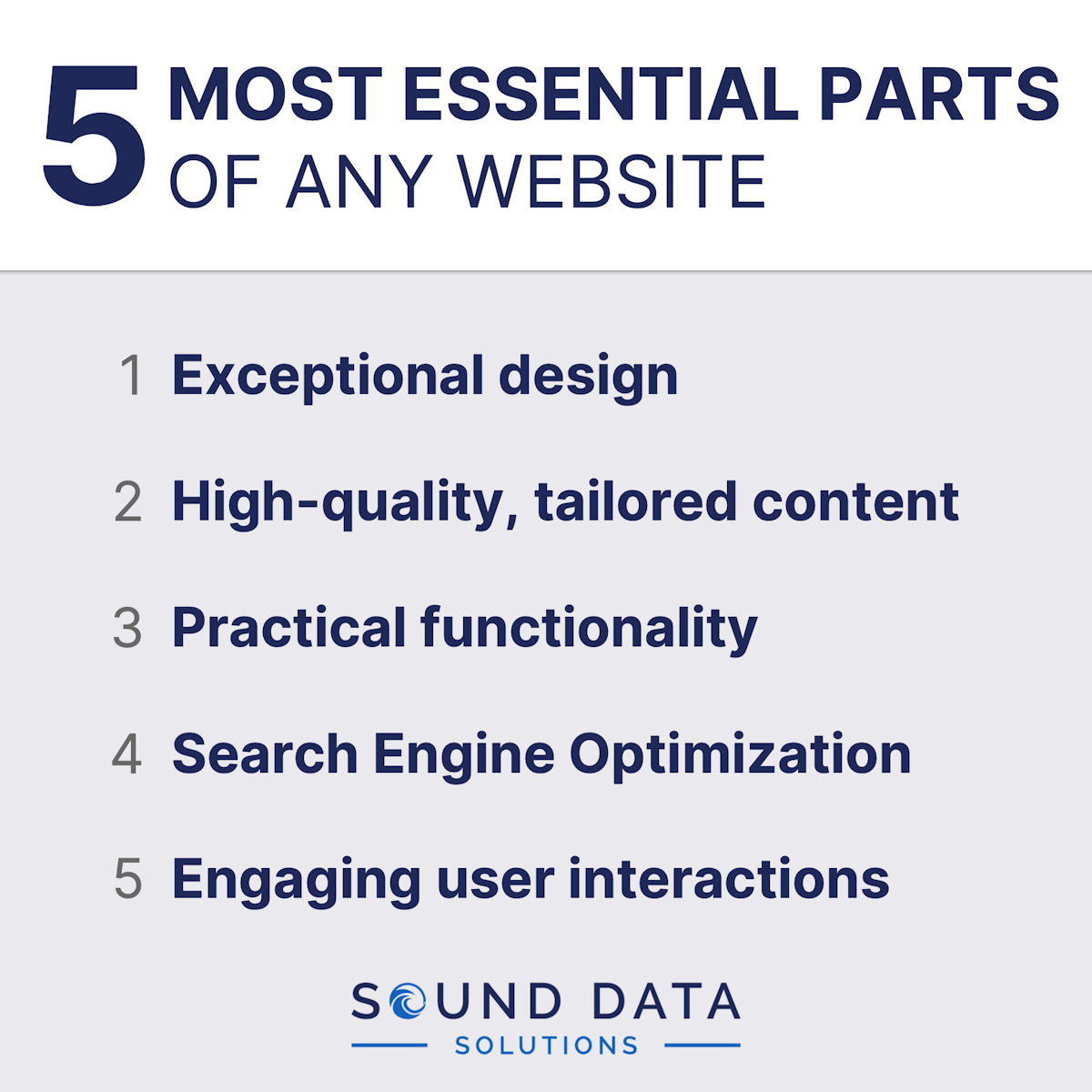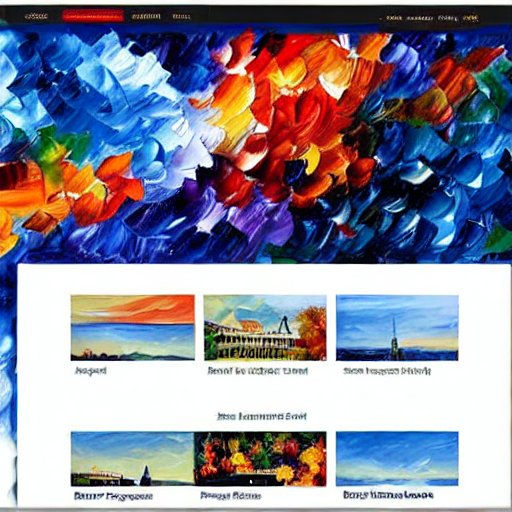The 5 Most Essential Parts of Any Website
By Matthew Fisher

Your business, brand, and digital identity are unique. Even so, ensuring your website uses established practices to address the essential parts of good website design is a good idea. This will ensure your audience can find you, stay engaged, and convert to paying customers. This article describes the 5 most essential parts of any website that you should ensure are present on your website to help your digital identity shine through. These essentials are simple and practical, allowing you to start incorporating them immediately. <Image src="/images/articles/essential-parts-of-a-website/5-essential-parts-of-any-website-infographic.png" alt="5 essential parts of any website - Infographic by Sound Data Solutions" width={600} height={600} caption="The 5 most essential parts of any website" /> ## Exceptional Design~Design <Image src="/images/articles/essential-parts-of-a-website/exceptional-website-design.png" alt="Colorful, abstract representation of web design" width={512} height={512} /> Exceptional website design is not just about the aesthetics of your site (although the look and feel are critically important). Web design also encompasses the opportunities for visitors to engage and interact with your business. Stay current on trends in design, but don't read too much into them since they change fairly frequently. More importantly, keep your designs consistent and focus on simplicity with an uncluttered, minimalist approach. Prioritize readability and navigability of your pages so visitors can find what they're looking for quickly and without confusion. And it is absolutely essential to optimize your website for mobile by using responsive design on all of your pages! ## High-Quality, Tailored Content~Content <Image src="/images/articles/essential-parts-of-a-website/chess-pieces-on-grass.png" alt="Chess pieces in the grass - content is King, but marketing is Queen" width={512} height={512} /> The content on your website must speak to your target audience and address their needs. Having high-quality, tailored content that is relevant to your audience is far more important than having a lot of content. Bill Gates is credited with saying "Content is King." <Link href="https://garyvaynerchuk.com/">Gary Vaynerchuk</Link> extended this in 2008 to "Content is King but Marketing is Queen." The message is clear - content is an important part of not only your digital presence, but of your business. Content informs your audience about who you are and what you do and can be used to build trust and establish your brand's expertise in your industry. <Quote author="Gary Vaynerchuk">Content is King but marketing is Queen.</Quote> High-quality, relevant, tailored content alone is not enough to ensure success in the digital world. It's equally important to have a strong marketing strategy in place to promote your content and reach your audience. Marketing encompasses a wide range of tactics, from social media and email to paid advertising and SEO. By promoting your content effectively, you can reach more people and build a loyal following. ## Practical Functionality~Functionality <Image src="/images/articles/essential-parts-of-a-website/gears-on-paper-with-lighting.png" alt="Chess pieces in the grass - content is King, but marketing is Queen." width={512} height={512} /> Your website's navigation, pages, structure, content, and interactions work best when they have a clear and specific purpose. If you haven't already defined a clear purpose (or a few purposes) for your website, I would recommend starting with writing it down. <strong>Think about what you want your visitors to do on your site that furthers their engagement or connection with your brand</strong>. The purpose for your site might be to: - Attract new customers - Increase awareness about your business or mission - Sell a product or service - Promote an event - Grow your mailing list These are just examples, but by defining the purpose for your website, it is a lot easier to identify the functionality on your site that serves you effectively. With a clear purpose for your site existing, you can now turn to optimizing the functionality on your site to serve that purpose. ## Search Engine Optimization~SEO <Image src="/images/articles/essential-parts-of-a-website/magnifying-glass-search-engine-optimization.png" alt="Magnifying glass representing Search Engine Optimization" width={512} height={512} /> Your website is most useful when potential customers can find it and it meets their needs. Traffic to your website is less important than <strong>qualified traffic</strong> - visits from a targeted audience of potential customers needing your products or services. Search engine optimization (SEO) is the practice of tuning and refining the pages and structure of your website to improve its visibility in search engine results pages (SERPs) and help potential customers find you. ## Engaging User Interactions~User Engagement <Image src="/images/articles/essential-parts-of-a-website/wooden-heart-art.png" alt="Red heart attached to wood with a wooden background" width={512} height={512} /> If you think of your website as an extension of your brand—your digital identity—then the interactions visitors have with your brand online should be reflective of your brand overall. Importantly, make it easy for the people who visit your site to fulfill their reason for visiting. Generally, your visitors come to your website with an <ins>intent</ins>, which may be: - <strong>Commercial</strong>: visitors looking to compare product or service options in the marketplace - <strong>Transactional</strong>: visitors looking to complete an action or make a purchase - <strong>Informational</strong>: visitors looking to find information that answers queries they have - <strong>Navigational</strong>: visitors looking for a specific site or content on a site







